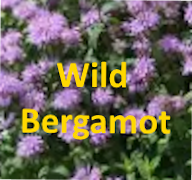DIY Nectar: Amazing Secrets to Mimic Crossvine’s Bloom

Can DIY homemade nectar replicate the complex chemistry of the nectar produced by the crossvine plant? This is a question that intrigues both gardening enthusiasts and nature lovers alike. The quest to understand the unique chemistry of crossvine nectar, how it compares to homemade alternatives, and the cultivation specifics of this plant offers a fascinating dive into botany.
The Chemistry of Crossvine Nectar
The nectar of the crossvine (Bignonia capreolata) is a sweet, enticing liquid produced by the plant to attract pollinators, such as bees and hummingbirds. This nectar is not just a simple sugar water; it has a unique chemical composition tailored to the plant’s ecological requirements and the preferences of its pollinators. The primary components are sugars like sucrose, glucose, and fructose, which are common in many nectar-producing plants. However, the concentration and ratio of these sugars can vary significantly from one species to another, affecting the taste and how appealing the nectar is to different pollinators. Besides sugars, crossvine nectar contains amino acids, proteins, and other organic compounds that may play roles in attracting pollinators, deterring predators, and preventing microbial growth.
Can DIY Homemade Nectar Compare?
Creating a DIY homemade nectar that closely matches the natural chemistry of crossvine nectar presents challenges. While it’s relatively straightforward to dissolve sugars in water to create a basic nectar, replicating the exact sugar composition and the presence of non-sugar components requires detailed chemical analysis and precision in formulation. Homemade nectar typically involves a mix of sugar and water, sometimes with the addition of citric acid to mimic the slight acidity found in some natural nectars. However, achieving the complex blend of amino acids and proteins is more complex, making it difficult to fully replicate the chemical profile of crossvine nectar.
Nectar Production and Flowering Patterns
Each flower of the crossvine can produce a significant amount of nectar, attracting a host of pollinators throughout its flowering season. The plant is known for its generous nectar production, which peaks during the morning, making it a popular choice for those looking to attract wildlife to their gardens.
Crossvine: Perennial Vigor and Growing Season
The crossvine is a robust perennial plant, meaning it can live for more than two years, often thriving year after year once established. Its growing season spans from early spring to late summer, with vibrant trumpet-shaped flowers that provide a stunning display as well as a rich source of nectar. This vigorous climber can cover fences, trellises, and other structures, adding both beauty and biodiversity to the garden.
Cultivation and Care
When it comes to its preferred environment, crossvine is quite versatile. It can flourish in both sun and partial shade, though full sun is ideal for maximum flowering. Its growth vigor makes it a plant that’s relatively easy to care for, provided it’s planted in well-draining soil and receives adequate water, especially during dry spells.
Pruning is an essential aspect of crossvine maintenance, helping to control its growth and encourage more prolific blooming. The optimal time for pruning is shortly after the flowering season ends, which allows time for new growth that will produce next season’s flowers.
Geographic Distribution and Adaptability
Native to the southern United States, crossvine has adapted well to a variety of climates and can be grown in USDA zones 6 through 9. This wide range highlights the plant’s adaptability to different environmental conditions, making it a suitable candidate for many gardens across the country.
Understanding the intricacies of crossvine nectar and the specifics of cultivating this enchanting plant enriches our appreciation for the natural world. While replicating the exact chemistry of crossvine nectar at home presents challenges, the pursuit of such knowledge underscores our enduring fascination with the complexity of nature and the joy of gardening. Whether you’re a seasoned green thumb or a curious newcomer, the world of plants offers endless opportunities for discovery and delight.





